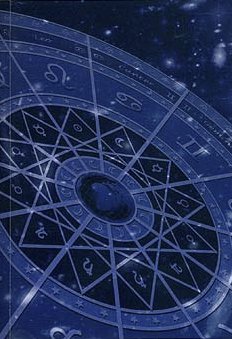Adhobhaga, Adhobhāga, Adhas-bhaga, Adho-bhaga, Adhobhoga: 16 definitions
Introduction:
Adhobhaga means something in Hinduism, Sanskrit, Buddhism, Pali, Marathi. If you want to know the exact meaning, history, etymology or English translation of this term then check out the descriptions on this page. Add your comment or reference to a book if you want to contribute to this summary article.
In Hinduism
Ayurveda (science of life)
Source: gurumukhi.ru: Ayurveda glossary of termsAdhobhāga (अधोभाग):—[adhobhāgaḥ] Lower abdomen - Lower part of the portion of the trunk located between chest and pelvis

Āyurveda (आयुर्वेद, ayurveda) is a branch of Indian science dealing with medicine, herbalism, taxology, anatomy, surgery, alchemy and related topics. Traditional practice of Āyurveda in ancient India dates back to at least the first millenium BC. Literature is commonly written in Sanskrit using various poetic metres.
Jyotisha (astronomy and astrology)
Source: Google Books: Studies in the History of the Exact Sciences (Astronomy)Adhobhaga (अधोभग) [Adhobhāga?] refers to the “bottom” (of a bowl), used in the creation of a water-clock.—(Cf. Astronomical instruments in Bhāskarācārya’s Siddhāntaśiromaṇi).—According to Munīśvara (1603 A.D.) in his Marīci commentary on Bhāskara II: “The bowl should be so made that it has a large hole (pṛthucchidra = mahārandhra) at the bottom [i.e., adhobhaga]. Through this statement it is indicated that the hole should be made in such a manner that, when the bowl is placed on the water of the basin and when water enters [the bowl], the hole is not blocked by any dirt that may be in the water of the basin. Because of the possibiliy of a small hole getting blocked by dirt an the like, assuming here a coalescene of the vowel a (akāra-praśleṣa) [by reading apṛthu] is not proper”.

Jyotisha (ज्योतिष, jyotiṣa or jyotish) refers to ‘astronomy’ or “Vedic astrology” and represents the fifth of the six Vedangas (additional sciences to be studied along with the Vedas). Jyotisha concerns itself with the study and prediction of the movements of celestial bodies, in order to calculate the auspicious time for rituals and ceremonies.
Languages of India and abroad
Pali-English dictionary
Source: BuddhaSasana: Concise Pali-English Dictionaryadhobhāga : (m.) the lower part.
Source: Sutta: The Pali Text Society's Pali-English DictionaryAdhobhāga refers to: the lower part (of the body) M.I, 473; DhA.I, 148.
Note: adhobhāga is a Pali compound consisting of the words adho and bhāga.

Pali is the language of the Tipiṭaka, which is the sacred canon of Theravāda Buddhism and contains much of the Buddha’s speech. Closeley related to Sanskrit, both languages are used interchangeably between religions.
Marathi-English dictionary
Source: DDSA: The Molesworth Marathi and English Dictionaryadhōbhāga (अधोभाग).—m (S) The lower part; the bottom; the fundament.
Source: DDSA: The Aryabhusan school dictionary, Marathi-Englishadhōbhāga (अधोभाग).—m The lower part, the bottom, the fundament.
Marathi is an Indo-European language having over 70 million native speakers people in (predominantly) Maharashtra India. Marathi, like many other Indo-Aryan languages, evolved from early forms of Prakrit, which itself is a subset of Sanskrit, one of the most ancient languages of the world.
Sanskrit dictionary
Source: DDSA: The practical Sanskrit-English dictionaryAdhobhāga (अधोभाग).—
1) the lower part (of the body); पूर्वभागो गुरुः पुंसामधोभागस्तु योषितां (pūrvabhāgo guruḥ puṃsāmadhobhāgastu yoṣitāṃ) Suśr.
2) the lower part of any thing, the region below, down below; °व्यवस्थितं किंचित्पुरमालोकितं (vyavasthitaṃ kiṃcitpuramālokitaṃ) Pañcatantra (Bombay) 1. situated down below, See पाताल (pātāla).
Derivable forms: adhobhāgaḥ (अधोभागः).
Adhobhāga is a Sanskrit compound consisting of the terms adhas and bhāga (भाग).
Source: Cologne Digital Sanskrit Dictionaries: Shabda-Sagara Sanskrit-English DictionaryAdhobhāga (अधोभाग).—m. (gaḥ) The bottom, the lowest part. E. adhas, and bhāga part.
Source: Cologne Digital Sanskrit Dictionaries: Benfey Sanskrit-English DictionaryAdhobhāga (अधोभाग).—m. 1. the lower part, [Daśakumāracarita] in
Adhobhāga is a Sanskrit compound consisting of the terms adhas and bhāga (भाग).
Source: Cologne Digital Sanskrit Dictionaries: Cappeller Sanskrit-English DictionaryAdhobhāga (अधोभाग).—[masculine] underpart, bottom, depth.
Source: Cologne Digital Sanskrit Dictionaries: Monier-Williams Sanskrit-English DictionaryAdhobhāga (अधोभाग):—[=adho-bhāga] [from adhas] m. the lower or lowest part, especially of the body.
Source: Cologne Digital Sanskrit Dictionaries: Goldstücker Sanskrit-English DictionaryAdhobhāga (अधोभाग):—[tatpurusha compound] m.
(-gaḥ) 1) The bottom, the lowest part.
2) The lower part of the body. E. adhas and bhāga.
Source: Cologne Digital Sanskrit Dictionaries: Yates Sanskrit-English DictionaryAdhobhāga (अधोभाग):—[adho+bhāga] (gaḥ) 1. m. The bottom.
[Sanskrit to German]
Sanskrit, also spelled संस्कृतम् (saṃskṛtam), is an ancient language of India commonly seen as the grandmother of the Indo-European language family (even English!). Closely allied with Prakrit and Pali, Sanskrit is more exhaustive in both grammar and terms and has the most extensive collection of literature in the world, greatly surpassing its sister-languages Greek and Latin.
Kannada-English dictionary
Source: Alar: Kannada-English corpusAdhōbhōga (ಅಧೋಭೋಗ):—[noun] the lowest portion; the bottom part.
Kannada is a Dravidian language (as opposed to the Indo-European language family) mainly spoken in the southwestern region of India.
See also (Relevant definitions)
Partial matches: Adho, Bhaga, Adhas, Ato.
Starts with: Adhobhagadoshahara, Adhobhagahara.
Full-text: Adhobhagadoshahara, Purvabhaga, Adhobhagahara, Hara.
Relevant text
Search found 2 books and stories containing Adhobhaga, Adhobhāga, Adhōbhāga, Adhas-bhaga, Adhas-bhāga, Adho-bhaga, Adho-bhāga, Adhobhoga, Adhōbhōga; (plurals include: Adhobhagas, Adhobhāgas, Adhōbhāgas, bhagas, bhāgas, Adhobhogas, Adhōbhōgas). You can also click to the full overview containing English textual excerpts. Below are direct links for the most relevant articles:
Atharvaveda and Charaka Samhita (by Laxmi Maji)
Classification of diseases in the Caraka-Saṃhitā < [Chapter 4 - Diseases and Remedial measures (described in Caraka-saṃhitā)]
Sushruta Samhita, volume 4: Cikitsasthana (by Kaviraj Kunja Lal Bhishagratna)